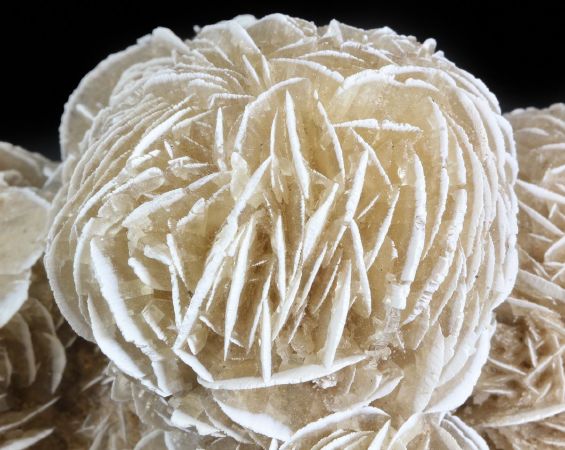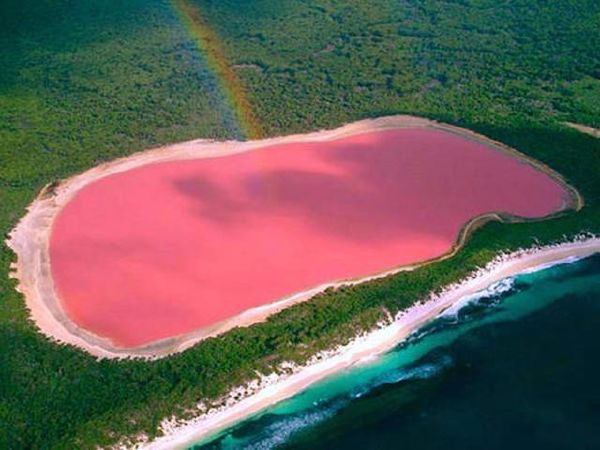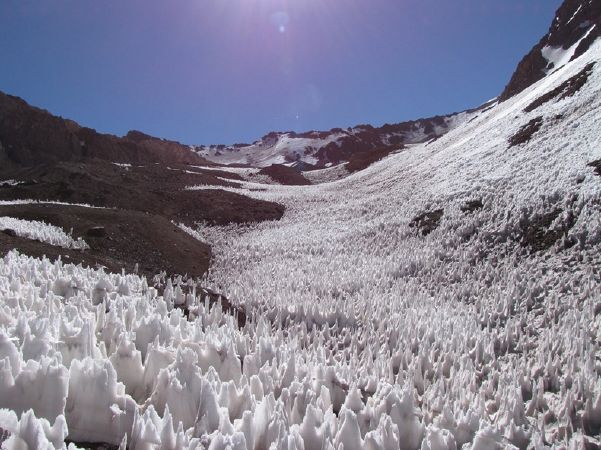Top 10 incredible surreal places on Earth
On a planet where the pyramids, Babylon Hanging Gardens and Mausoleum at Halicarnassus are one of the world's greatest wonders, it's often hard to believe that bizarre things like rainbows, polka dots and "blood" waterfall can exist. But venture into the most beautiful, surreal corners of the world and you'll find a wide range of scientific marvels that make for interesting and fanciful scenes.
6
Stone rose

Not a stone or rose, a phenomenon found in Mexico and Tunisia (and less common in Arizona) is called rock rose. Made of plaster or barite, these roses are created by evaporation when one or more of the other minerals bind sand particles in a dry, saline environment.
With an average size of 10 cm (4 in) on each petal, these rose-like stones are colored directly related to how they are formed. Those created in shallower positions usually produce amber petals, while deeper shapes in a larger space usually produce yellow or transparent petals.
The unique shape of these roses is not the only unusual thing about them. Regardless of their color during the day or where they grow, all will glow the same milky white when placed under ultraviolet light.
7
Blood rain

Travel to a number of places in India, specifically Kerala, and you can be entertained by a hail of blood. While the name evokes some kind of biblical thriller, The state's worst weather conditions are not the result of oxidation in water, but rather because of the state's proximity to nearby deserts.
Although the evaporation rain is clean, it can get loads of things on the way down. (Acid rain is a good example and the result of this.) But chemicals are not the only things that can be mixed with rainfall.
Particles in the air that are thin enough and high enough can also blend with moisture in the clouds. When the red sand particles mingle with those clouds, they fall down into the bloody puddles, even leaving a red trail behind when the rain evaporates itself.
This scientific explanation of the particles mixed with the moisture of the cloud was also true of the same phenomenon in Russia in July 2018. The city of Norilsk was surrounded by red rain one afternoon.
Culprit?
A metal processing plant has performed some routine maintenance. Rusted debris was scrapped from the floor mingled with the clouds. Not long after, the red rain poured out.
8
Bubble water

For strawberry lovers around the world, you are very lucky. . . At least visually. There is a vibrant pink lake off the coast of Western Australia named Hillier. Although it is not the only pink lake in the world, Hillier water is special because it is the only place where water does not lose its color when collected.
This color is not only an optical illusion but is also not the result of an underwater shell. Instead, it is the result of several factors combined together.
Discovered in 1802, Lake Hillier is home to a halophilic (salt-loving) algae called Dunaliella that generates their energy through the use of all visible light frequencies, except for the rays that fall in the orange red spectrum. In addition, leaving behind red light energy, these algae create carotene variants that contribute to the lake's reddish-pink color.
9
Lake mummified

At first glance, Lake Natron in Tanzania is an oasis with bloody waters surrounded by many birds hiding on the coast.
Also known as "Stone Animal Lake," a part of Africa has been rumored to be so alkaline that it can instantly kill and petrify any animal that dares to wander. into it.
The fact that it is the result of optical illusion or the presence of halophilic bacteria, the dark red color of Natron, is thought to be due to the presence of minerals formed by volcanic processes in the area.
These processes gradually increase the pH of the water until it becomes saturated with sodium and sodium carbonate, which has been used in mummification practice. The presence of various minerals, along with remnants of animals that cannot live in such harsh conditions, greatly increases the alkalinity of the water.
As such, it becomes favorable for haloarchaea, the red-bodied creatures that tarnish the colors of the lake and the flamingos' plumage often live underwater.
10
Forest of ice blades

From the hobby of childhood snowman to craft stone sculptor, the activity of shaping snow and ice into many beautiful forms has been around for a while and doesn't seem to be going anywhere. However, what happens when the Earth itself decides to participate in the fun?
Travel to different areas in Chile, and you will find miniature icy forests. . . but exactly no snow or ice in the surrounding area. First discovered in 1835, these "penitentes" can be as high as 5 meters (16 ft) tall.
They are the direct result of sublimation, a chemical process by which a heat source converts a solid into a gas without first melting it. In a process that only builds on itself, the formation of smaller spikes concentrates sunlight. This speeds up the sublimation until the entire forest of these thorns will cross over the landscape.
Suitable for you
02-07-2023 cookie
02-07-2023 cookie
01-07-2023 cookie
01-07-2023 cookie
01-07-2023 cookie
